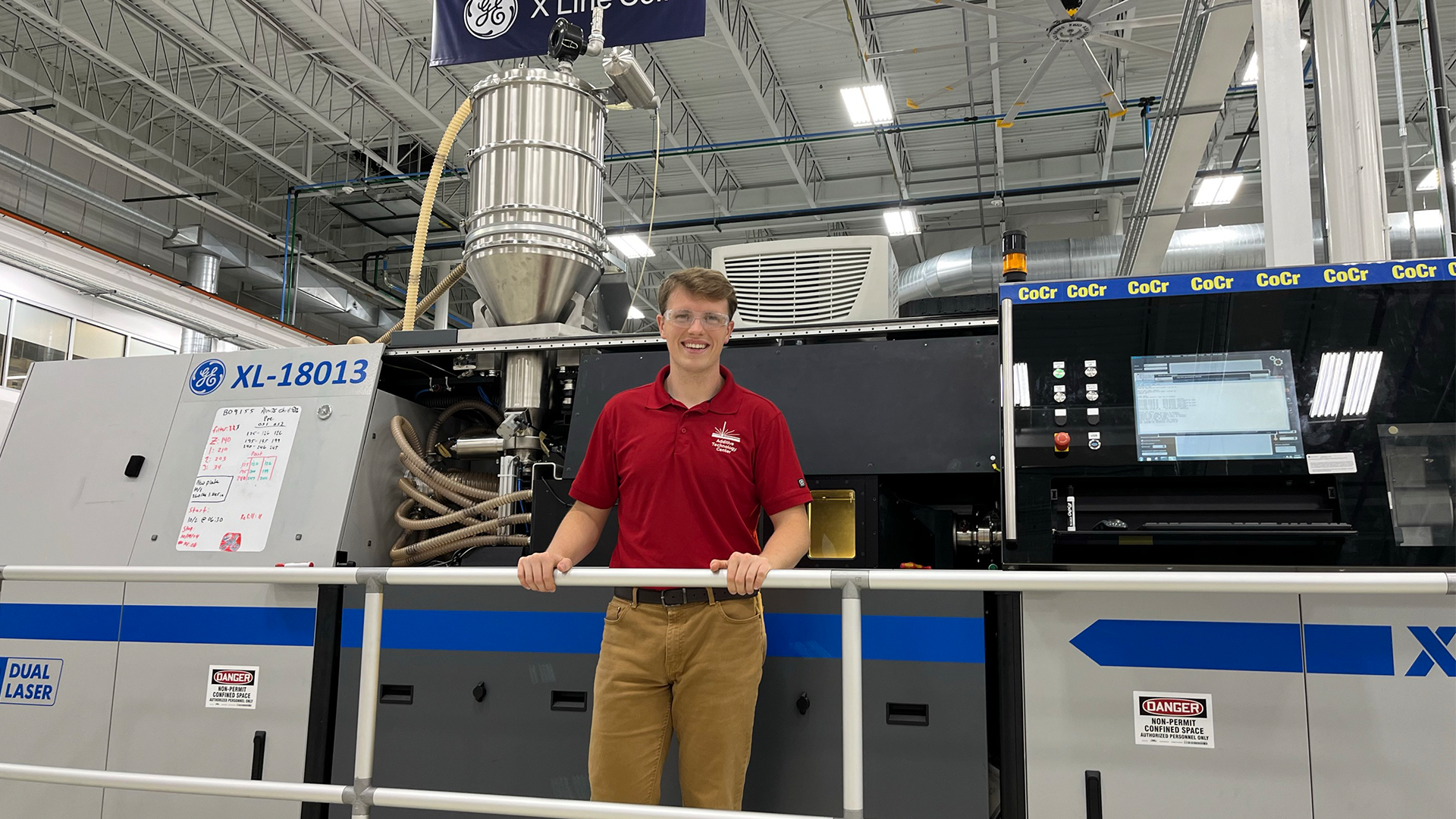Powered by GE's YT706, Sikorsky's S-97 Raider Shows Off its Agility
October 30, 2019 | by Rich Gorham
Sikorsky hosted the inaugural flight demonstration of its S-97 Raider™ at its West Palm Beach flight test center this summer and the event did not disappoint. The S-97 Raider, a high-speed coaxial helicopter powered by a single GE YT706 engine, smoothly demonstrated both top-end speed and agility.
The Raider aircraft is an industry-funded, risk-reduction demonstrator that is supporting Sikorsky’s entry into the U.S. Army’s Future Vertical Lift (FVL), Future Attack Recon Aircraft (FARA), and Future Long-Range Assault Aircraft (FLRAA) initiatives. GE Aviation’s YT706 engine—a 2,600 shaft-horsepower variant of the T700 that includes a FADEC (full authority digital engine control)—is a key player on the single-engine S-97.
The S-97 features next-generation technologies that are expected to meet or exceed the Army’s FARA requirements. The coaxial counter-rotating main rotors and pusher propeller provide cruise speeds up to 220 knots (253 mph), significantly more than the speed of conventional helicopters. The clutched rear propeller can boost speed or shut off in hover. The Raider also exhibits enhanced maneuverability, significantly improved high/hot hover performance, and greater range and endurance.
“Since engine selection, we’ve continued to collaborate closely with Sikorsky to ensure our YT706-700 engine is properly mated to the aircraft and is prepared to provide optimum performance,” said John Martin, GE’s Director of Advanced Turboshaft Programs. Martin noted that there were several design-installation challenges and specific requirements to accommodate single-engine features.
In addition to its efforts on the Raider, the Army has selected GE’s 3,000-SHP T901 for FARA, and earlier this year the T901-900 turboshaft was tapped for the Integrated Turbine Engine Program (ITEP) competition. GE is presently engaged in the Engineering & Manufacturing Development phase of ITEP, the Army's effort to re-engine its Boeing AH-64 Apaches and Sikorsky UH-60 Black Hawks.
GE is also working with airframers that are competing for the larger FLRAA contract; the T408, which powers the three-engine Sikorsky CH-53K King Stallion, has emerged as a strong candidate. Along with the T408, GE has additional derivative options using technology from its FATE (Future Affordable Turboshaft Engine) demonstrator engine that completed testing this year. FLRAA is an Army UH-60 Blackhawk replacement. The Army expects to make a FLRAA Competitive Demonstrator award in 2020.
The Raider aircraft is an industry-funded, risk-reduction demonstrator that is supporting Sikorsky’s entry into the U.S. Army’s Future Vertical Lift (FVL), Future Attack Recon Aircraft (FARA), and Future Long-Range Assault Aircraft (FLRAA) initiatives. GE Aviation’s YT706 engine—a 2,600 shaft-horsepower variant of the T700 that includes a FADEC (full authority digital engine control)—is a key player on the single-engine S-97.
The S-97 features next-generation technologies that are expected to meet or exceed the Army’s FARA requirements. The coaxial counter-rotating main rotors and pusher propeller provide cruise speeds up to 220 knots (253 mph), significantly more than the speed of conventional helicopters. The clutched rear propeller can boost speed or shut off in hover. The Raider also exhibits enhanced maneuverability, significantly improved high/hot hover performance, and greater range and endurance.
“Since engine selection, we’ve continued to collaborate closely with Sikorsky to ensure our YT706-700 engine is properly mated to the aircraft and is prepared to provide optimum performance,” said John Martin, GE’s Director of Advanced Turboshaft Programs. Martin noted that there were several design-installation challenges and specific requirements to accommodate single-engine features.
In addition to its efforts on the Raider, the Army has selected GE’s 3,000-SHP T901 for FARA, and earlier this year the T901-900 turboshaft was tapped for the Integrated Turbine Engine Program (ITEP) competition. GE is presently engaged in the Engineering & Manufacturing Development phase of ITEP, the Army's effort to re-engine its Boeing AH-64 Apaches and Sikorsky UH-60 Black Hawks.
GE is also working with airframers that are competing for the larger FLRAA contract; the T408, which powers the three-engine Sikorsky CH-53K King Stallion, has emerged as a strong candidate. Along with the T408, GE has additional derivative options using technology from its FATE (Future Affordable Turboshaft Engine) demonstrator engine that completed testing this year. FLRAA is an Army UH-60 Blackhawk replacement. The Army expects to make a FLRAA Competitive Demonstrator award in 2020.
 GE is excited to be a key player on the single-engine S-97 with its YT706, a 2,600 shaft-horsepower T700 variant that includes a FADEC. Photos courtesy Lockheed Martin.
GE is excited to be a key player on the single-engine S-97 with its YT706, a 2,600 shaft-horsepower T700 variant that includes a FADEC. Photos courtesy Lockheed Martin.





